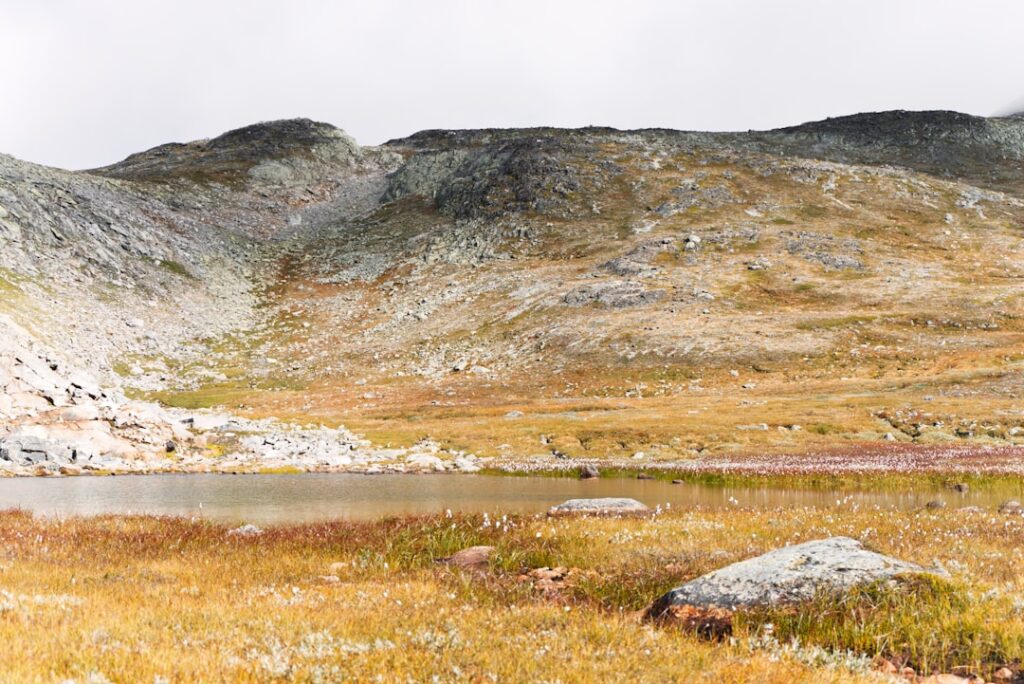
Hiking is a popular outdoor activity that involves walking on trails or paths in natural environments such as forests, mountains, and national parks. It is a great way to connect with nature, get some exercise, and enjoy the beauty of the outdoors. Hiking can range from easy, leisurely walks to more challenging treks that require physical endurance and stamina. It is important for beginner hikers to understand the basics of hiking before embarking on their first adventure.
One of the most important aspects of hiking is being prepared. This includes knowing the trail you will be hiking, understanding the terrain and weather conditions, and being equipped with the right gear. It is also important to pace yourself and listen to your body, especially if you are new to hiking. Start with shorter, easier trails and gradually work your way up to more challenging hikes as your fitness level improves. Additionally, it is crucial to respect the environment and leave no trace by properly disposing of waste and not disturbing wildlife. By understanding these basics, beginner hikers can have a safe and enjoyable experience on the trail.
Hiking can also be a social activity, so it’s important to consider the needs and abilities of everyone in your group. Make sure to communicate with your hiking partners and establish a plan before hitting the trail. This includes setting a comfortable pace, deciding on rest stops, and ensuring that everyone has the necessary gear and supplies. It’s also a good idea to have a basic understanding of navigation and orienteering, as well as knowing how to read trail markers and maps. By being prepared and informed, beginner hikers can have a positive and rewarding experience in the great outdoors.
Key Takeaways
- Hiking is a great way to enjoy the outdoors and stay active, but it’s important to understand the basics before hitting the trail.
- Essential gear for beginner hikers includes sturdy footwear, a backpack, water, snacks, and navigation tools like a map or GPS.
- Choosing the right trail for your skill level is crucial for a safe and enjoyable hiking experience.
- Safety tips for hiking in the mountains include checking the weather, staying on marked trails, and being prepared for changes in conditions.
- To prepare for a day hike, make sure to pack plenty of water, snacks, sunscreen, and a first aid kit, and let someone know your plans.
Essential Gear for Beginner Hikers
When it comes to hiking, having the right gear can make all the difference in your experience on the trail. For beginner hikers, it’s important to invest in essential gear that will keep you safe, comfortable, and prepared for any situation. One of the most important pieces of gear is a sturdy pair of hiking boots or shoes that provide good ankle support and traction. This will help prevent injuries and provide stability on uneven terrain. Additionally, wearing moisture-wicking socks will help keep your feet dry and blister-free.
Another essential item for beginner hikers is a well-fitted backpack to carry all your gear and supplies. Look for a backpack with adjustable straps, multiple compartments, and padding for comfort. Inside your backpack, be sure to pack plenty of water to stay hydrated, as well as high-energy snacks to keep your energy levels up. It’s also important to bring a map and compass or GPS device for navigation, as well as a first aid kit for any minor injuries that may occur on the trail.
Other essential gear for beginner hikers includes appropriate clothing for the weather conditions, such as moisture-wicking layers, a waterproof jacket, and a hat for sun protection. It’s also important to bring a headlamp or flashlight in case you end up hiking after dark, as well as a multi-tool for any unexpected repairs or adjustments. By investing in essential gear, beginner hikers can feel confident and prepared for their outdoor adventures.
Choosing the Right Trail for Your Skill Level
When it comes to hiking, choosing the right trail for your skill level is crucial for having an enjoyable and safe experience. For beginner hikers, it’s important to start with easy, well-marked trails that are relatively short in distance and have minimal elevation gain. Look for trails that are rated as “beginner” or “easy” in guidebooks or online resources. These trails are typically well-maintained and have clear signage, making them ideal for those who are new to hiking.
As you gain more experience and confidence, you can gradually progress to more moderate or challenging trails that offer longer distances and steeper terrain. It’s important to assess your fitness level and physical abilities before attempting more difficult hikes. Consider factors such as your endurance, strength, and any pre-existing medical conditions that may affect your hiking abilities. Additionally, take into account the weather conditions and time of year when choosing a trail, as certain trails may be more challenging during inclement weather or in extreme temperatures.
It’s also important to consider the overall experience you are seeking from a hike. Some hikers may prefer trails that lead to scenic viewpoints or waterfalls, while others may be interested in exploring historical sites or wildlife habitats. By choosing the right trail for your skill level and interests, you can have a rewarding and fulfilling hiking experience.
Safety Tips for Hiking in the Mountains
Hiking in the mountains can be a breathtaking and exhilarating experience, but it also comes with its own set of challenges and risks. For beginner hikers venturing into mountainous terrain, it’s important to be aware of safety tips that will help ensure a safe and enjoyable hike. One of the most important safety tips is to be prepared for changing weather conditions. Mountain weather can be unpredictable, so it’s essential to dress in layers and bring extra clothing to stay warm and dry. Additionally, be mindful of potential hazards such as rockslides, avalanches, and lightning storms.
Another crucial safety tip for hiking in the mountains is to stay hydrated and nourished. The higher altitude can cause dehydration more quickly than at lower elevations, so it’s important to drink plenty of water and eat high-energy snacks throughout your hike. It’s also important to pace yourself and take frequent breaks to rest and refuel.
When hiking in the mountains, it’s important to be mindful of altitude sickness, which can occur when ascending to higher elevations too quickly. Symptoms of altitude sickness include headache, nausea, dizziness, and fatigue. If you experience any of these symptoms, it’s important to descend to a lower elevation and seek medical attention if necessary.
Additionally, it’s important to be aware of wildlife that may inhabit mountainous areas, such as bears, mountain lions, and snakes. Be sure to research the wildlife in the area you will be hiking and take appropriate precautions such as making noise while hiking to alert animals of your presence.
By following these safety tips and being prepared for the unique challenges of hiking in the mountains, beginner hikers can have a safe and enjoyable experience in these awe-inspiring landscapes.
How to Prepare for a Day Hike
Preparing for a day hike involves careful planning and consideration of various factors that will contribute to a successful outing on the trail. One of the first steps in preparing for a day hike is researching the trail you plan to hike. This includes understanding the distance, elevation gain, terrain type, and any potential hazards or obstacles along the way. By familiarizing yourself with the trail beforehand, you can better prepare for what lies ahead.
Once you have chosen a trail, it’s important to pack essential gear and supplies for your day hike. This includes items such as water, snacks, a map or GPS device, first aid kit, extra clothing layers, sun protection (such as sunscreen and sunglasses), and a headlamp or flashlight. It’s also important to consider the weather forecast for the day of your hike and pack accordingly.
In addition to packing essential gear, it’s important to inform someone of your hiking plans before heading out on the trail. This includes sharing details such as the trail you will be hiking, your expected return time, and any emergency contacts. By communicating your plans with someone else, you can ensure that help will be available if needed.
Finally, it’s important to physically prepare for a day hike by staying active and maintaining good physical fitness. This includes regular exercise such as walking, jogging, or cycling to build endurance and strength. By preparing both mentally and physically for a day hike, beginner hikers can have a safe and enjoyable experience on the trail.
Enjoying the Scenery and Wildlife on the Trail

One of the most rewarding aspects of hiking is being able to enjoy the natural scenery and wildlife along the trail. Whether you’re hiking through lush forests, along mountain ridges, or near serene lakes, there are countless opportunities to appreciate the beauty of nature while on a hike. Take time to pause along the trail and soak in the sights and sounds around you. Listen to birds chirping, feel the breeze rustling through the trees, and take in panoramic views from scenic overlooks.
In addition to enjoying the scenery, keep an eye out for wildlife that may inhabit the area you are hiking. This could include birds, deer, squirrels, or even larger animals such as bears or elk in certain regions. Be respectful of wildlife by observing from a distance and refraining from feeding or approaching animals. It’s also important to be mindful of any potential hazards posed by wildlife and take appropriate precautions such as making noise while hiking in bear country.
Another way to enhance your hiking experience is by learning about the natural environment around you. This could include identifying different plant species along the trail or learning about geological formations that you encounter. Many trails have informational signs or guidebooks available that provide insight into the local flora, fauna, and geology.
By taking time to appreciate the scenery and wildlife on the trail, beginner hikers can gain a deeper connection with nature and develop a greater appreciation for the outdoors.
Post-Hike Recovery and Reflection
After completing a day hike or multi-day trek, it’s important to take time for post-hike recovery and reflection. This includes caring for your body by stretching sore muscles, hydrating with water, and refueling with nutritious food. It’s also important to tend to any minor injuries or blisters that may have occurred during your hike.
In addition to physical recovery, take time to reflect on your hiking experience and appreciate what you accomplished on the trail. Consider what went well during your hike and what challenges you may have faced along the way. Reflecting on your experience can help you learn from any mistakes or setbacks and improve your skills for future hikes.
It’s also important to clean and organize your gear after returning from a hike. This includes washing dirty clothing, airing out wet gear such as tents or sleeping bags, and restocking any used supplies in your backpack. By properly caring for your gear, you can ensure that it will be ready for your next outdoor adventure.
Finally, take time to share your hiking experience with others by documenting your journey through photos or writing about your adventure in a journal. Sharing your experiences can inspire others to get outdoors and explore nature while also allowing you to relive the memories of your hike.
By taking time for post-hike recovery and reflection, beginner hikers can fully appreciate their outdoor experiences while also preparing themselves for future adventures on the trail.
Post-hike recovery allows beginner hikers to rest and rejuvenate their bodies, reducing the risk of injury and fatigue. It also gives them the opportunity to reflect on the sights, sounds, and challenges of the hike, deepening their connection to nature and enhancing their overall experience. Additionally, taking time for recovery can help hikers identify areas for improvement and set goals for future hikes. By incorporating post-hike recovery and reflection into their outdoor adventures, beginner hikers can develop a greater appreciation for the natural world and build the physical and mental resilience needed for more challenging trails in the future.
Looking for more inspiration on outdoor adventures? Check out the article on “The Ultimate Guide to Collecting Outdoor Badges” on Badgelife.org. Whether you’re a beginner or an experienced hiker, this guide offers valuable insights and tips on how to collect badges for your outdoor achievements. It’s a great way to track your progress and motivate yourself to explore new trails and conquer challenging peaks. So, lace up your boots and start earning those outdoor badges!
FAQs
What is an easy mountain?
An easy mountain is a mountain that is relatively simple to climb, with a well-defined trail and minimal technical climbing skills required.
What are some examples of easy mountains?
Some examples of easy mountains include Mount Monadnock in New Hampshire, USA, Mount St. Helens in Washington, USA, and Mount Toubkal in Morocco.
What should I consider before climbing an easy mountain?
Before climbing an easy mountain, it is important to consider factors such as weather conditions, physical fitness, and proper gear. It is also advisable to research the specific trail and route to the summit.
What gear do I need for climbing an easy mountain?
For climbing an easy mountain, it is recommended to have sturdy hiking boots, appropriate clothing for the weather, a backpack with essentials such as water, snacks, a map, and a first aid kit. Depending on the mountain, trekking poles and a headlamp may also be useful.
Are there any risks associated with climbing an easy mountain?
While easy mountains are generally less challenging than more technical climbs, there are still risks associated with hiking and climbing, such as changing weather conditions, wildlife encounters, and potential for injury. It is important to be prepared and exercise caution.


